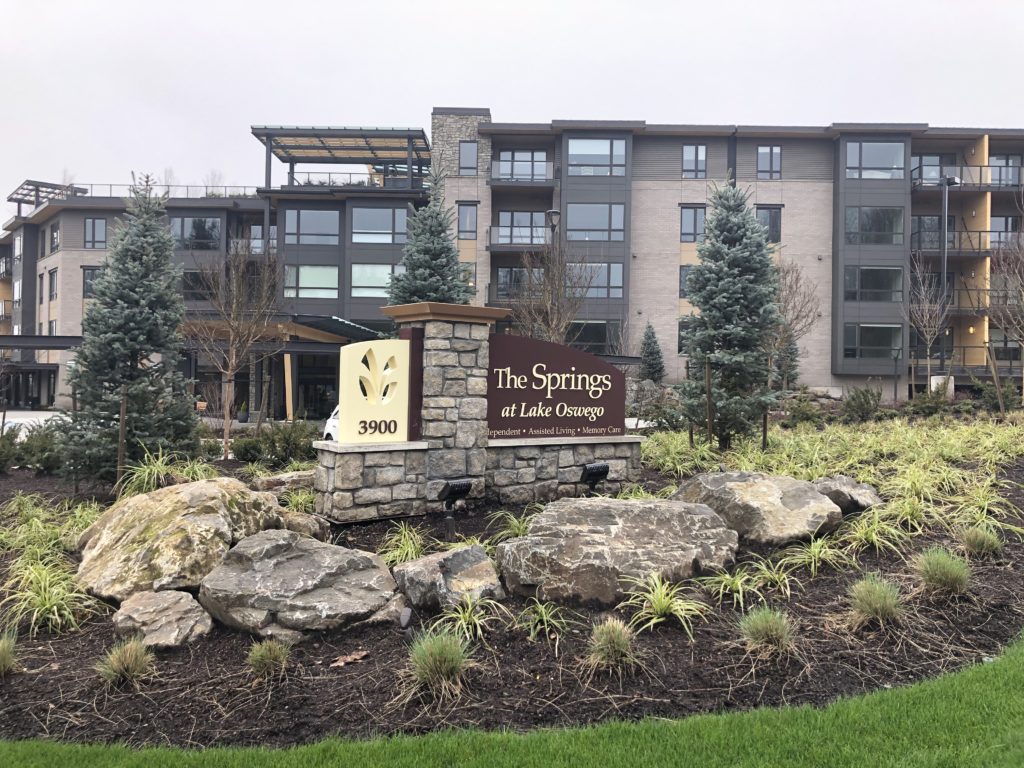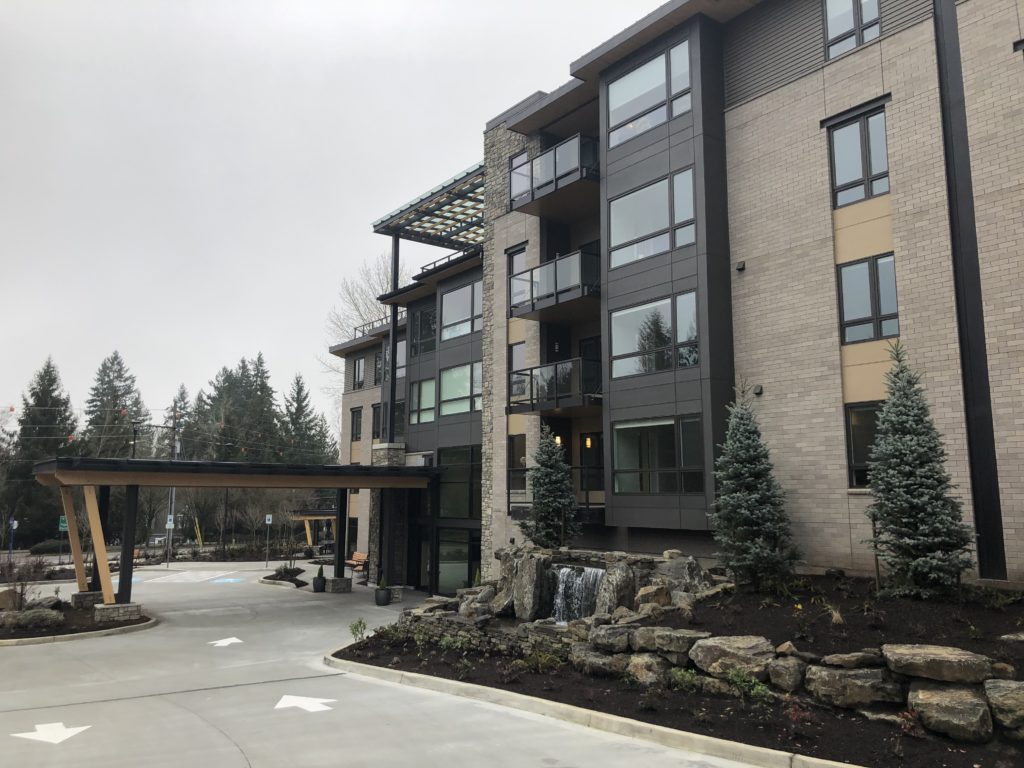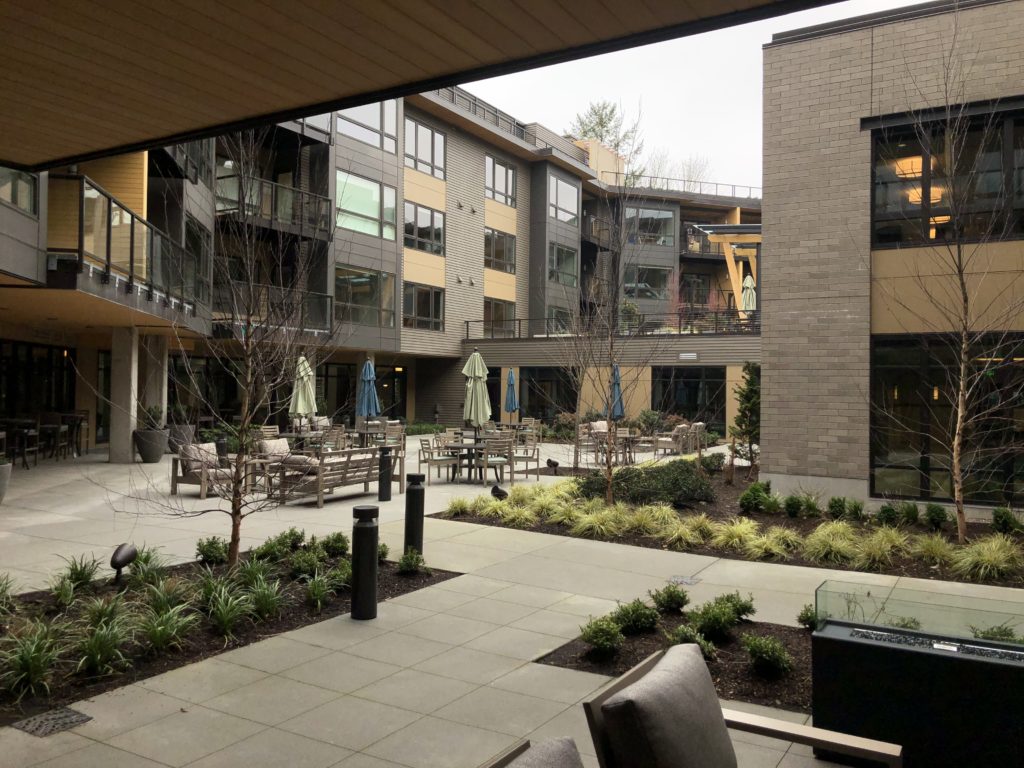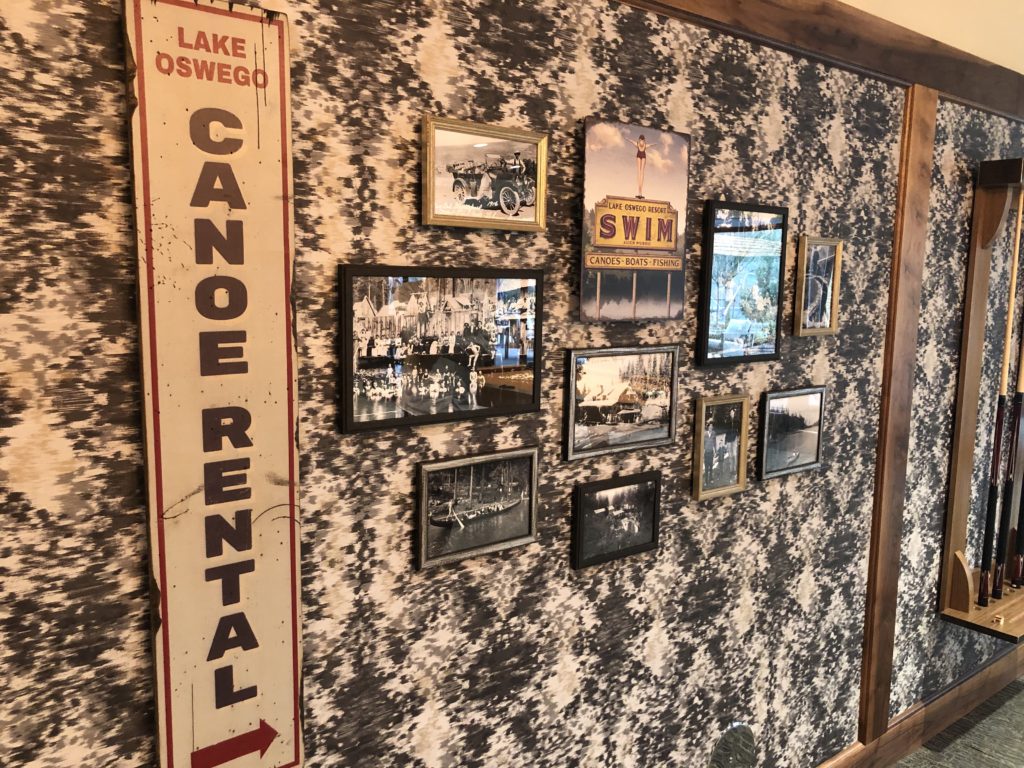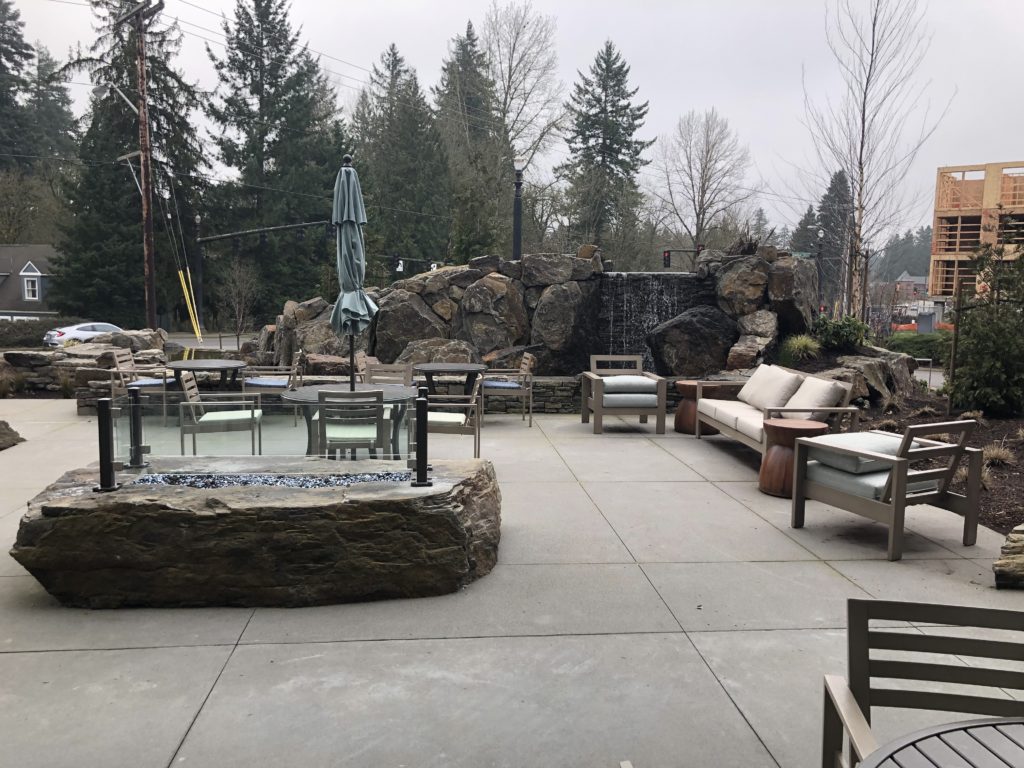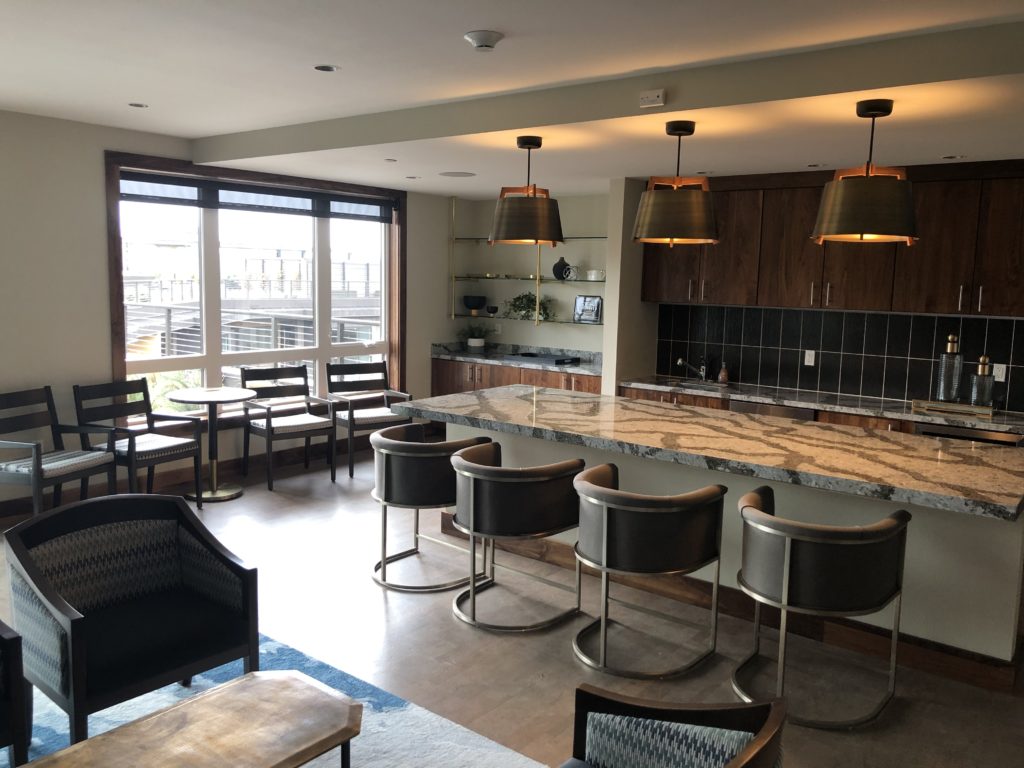The Springs Living is careful to maintain its quality as it grows. With an established foothold in the Pacific Northwest, The Springs Living Founder Fee Stubblefield is currently focused on how the senior living industry can do a better job of helping operators and capital providers strike a balance between growing and still maintaining operational standards.
The company’s name — adopted in 2010 — refers to the Lehman Hot Springs, a hot springs resort near Ukiah, Oregon, that Stubblefield’s grandfather, Fancho, started in 1925. As the story goes, the Cayuse tribe once brought their older members there to soak in the hot water and rejuvenate.
The resort isn’t just a namesake, either. It’s a metaphor for the level of service The Springs Living tries to instill across its portfolio, which includes 17 communities in Oregon and Montana and one in the works in Washington state.
“Nobody would go to that place in eastern Oregon if it wasn’t for that amazing, hot, therapeutic water,” Stubblefield told Senior Housing News. “So, the realization is that people come to our communities because of the care and the compassion that our staff have.”
The hot springs resort also serves as a grim reminder that success is not guaranteed. The family sold away or lost ownership of the Lehman resort three times over the years, but it always came back “like a boomerang,” Stubblefield said.
The last time the hot springs changed hands was when it was foreclosed on in 1988. At the time, Stubblefield’s father was in the midst of developing the hot springs, and had taken out a construction loan to pay for the project. But the savings and loan company that financed the project went out of business during the FDIC crisis of the 1980s.
“My dad had to bring in a friend to help, and the friend could only help so long,” Stubblefield remembered. “Then he ended up having to borrow money from a hard-money person, and we know the end of that story never works out.”
Although Stubblefield bought Lehman back in 2012 and turned it into a private retreat, the lesson has stuck with him ever since.
“Every day I wake up with that sense that something like that could happen if you make a wrong move,” Stubblefield said. “We grow at what we feel is a steady, controllable pace … because I know that can happen.”
The Springs Living first began as Willowcreek Management in 1996. The company started as a way to fulfill a promise Stubblefield had made to care for his grandmother in her later years.
“She would say, ‘promise me, don’t put me in an old folks home,’” Stubblefield said. “She was equating home to real estate and home to security in life and living well, and there wasn’t anything out there that she felt that would be home.”
Today, The Springs Living is on a careful upward climb. The company — which works with capital partners such as Harrison Street and Ventas (NYSE: VTR) — has plans to break ground on two new communities in 2020, and expects an additional acquisition to close this year.
All the while, the company’s stabilized occupancy is hovering around 95%. To help maintain quality and culture as it grows, the company promoted Jay Leo to president and Lisa Maynard to chief people officer last year.
The Springs Living is also working on some innovative initiatives, including a push to set quality growth standards with the National Investment Center for Seniors Housing & Care (NIC) Operator Advisory Board. Additionally, the company is investing in senior living-focused tech companies — though none it can name yet — and using its communities as a test laboratory.
“You’re going to see us putting a lot of effort into solving operational problems [and] investing in solutions to operational problems,” Stubblefield said. “We want to be an innovator.”
Northwest niche
A new community in Lake Oswego, Oregon showcases where The Springs Living is headed. The community has capacity for more than 250 residents, and includes amenities such as a rooftop wine bar, bocce ball court, putting green, beauty salon and barbershop, movie theater and an indoor swimming pool that stays a balmy temperature year-round — a nod to the family hot springs, Stubblefield said.
Developing the community came with a hefty price tag — all-in, more than $100 million — but so far the investment appears to be paying off quickly. Though the community opened just weeks ago, 87 apartments are already leased, and there are another 30 residents scheduled to move in soon, which should boost occupancy to around 70% and rising.
“The response has been overwhelming,” Stubblefield said. “We even canceled our public grand opening event because we just couldn’t handle the interest.”
The Springs Living’s robust interest from residents isn’t accidental. The company has carved out a niche for itself in the Northwest by offering a mix of high-end and middle-market communities, with resident rates ranging from the mid-$2,000s to more than $10,000.
The model is almost entirely private pay — with one notable exception, Stubblefield said.
“We’ve intentionally designed a payment structure through Medicaid waivers in Oregon that gives the private pay market confidence to move in because we have safety nets,” he explained.
Although The Springs Living loses about $1,000 per month on each Medicaid apartment it has, they are only a small percentage of the overall unit count, and they are effective at attracting new residents. The company knows this because there was a time when it canceled its Medicaid contract.
“We didn’t rent an apartment for six months,” Stubblefield recalled. “Even though people had the money to move in and pay privately, they were afraid to spend it.”
It also doesn’t hurt that Oregon has a comparatively high penetration rate when compared to other markets. This is due in part to the congenial relationships that many industry players in the area have, Stubblefield said.
“The operators in Oregon are largely collaborative,” he said. “We complement each other and we collaborate. It’s a great ecosystem.”
This is a similar phenomenon to the one seen in Lancaster, Pennsylvania, where providers thrive in a super-dense market by working together in a sense of “co-opetition.”
It also doesn’t hurt that the Portland market has seen a relatively measured rate of new supply compared to other markets — though that could change, Stubblefield said.
“We haven’t seen in Oregon the problems that we’ve seen that you see in Houston or Austin,” he noted. “[But] just because we haven’t doesn’t mean we won’t.”
Industry innovation
More generally, The Springs Living is focused on elevating operations in the senior living industry as a whole.
One concept Stubblefield is working on in a joint effort with the NIC Operator Advisory Board is a “quality growth curve” that could become an industry blueprint for scaling while maintaining company culture and operations.
The concept is partly meant to help capital providers understand how much they should be investing in operators in order to see better results on the ground.
“I think the big question is, as an industry, are we investing enough into our operational capacity to deliver the outcomes?” Stubblefield said. “The goal here is to create a universal set of indicators that can give capital an indication and really help us as operators answer that question.”
In other words, there is a risk as a company grows that its quality suffers. By identifying key indicators of quality, the growth curve should be able to bring a more quantitative approach to determining whether an operator is primed for successful expansion or whether resources would be better spent on improving existing operations. While capital has entered the senior living sector in historically unprecedented volume in recent years, this has fueled some overbuilding, while in some instances operating companies may actually be starved for the capital they need to be best in class.
“I think the big question is … are we investing enough into our operational capacity to deliver the outcomes?” Stubblefield said. “Or are we just real estate companies building buildings and hoping that we’ll find people that will be willing to be in the buildings 24/7, 365 days a year to take care of very important and hard things … and just hope we get lucky? I think for operators, this is a big concern.”
The company is also making its own inroads into senior living technology. The Springs Living has invested in senior-living-focused tech companies with the intention of upping its game. While Stubblefield said he couldn’t share many details at this moment, he teased that the technology could be “game-changer stuff” for the industry.
“We have the staff that can help assist and accommodate these tech entrepreneurs, and we want them to be successful,” Stubblefield said. “But we want to have a stake in the game because we think we have a piece of the puzzle.”
Looking ahead, The Springs Living will continue to innovate and grow where it sees opportunities. All the while, maintaining quality and culture is top of mind for the company. In fact, the company had a project fully entitled in California but sold to a different operator and walked away, to be cautious and not “outgrow our quality,” Stubblefield said.
“We’re in a position that we don’t actually have to grow anymore at all, which is great,” he said. “Hopefully in the future, we’re talking about innovations … and if we can contribute to it, then we’ll consider that successful.”

